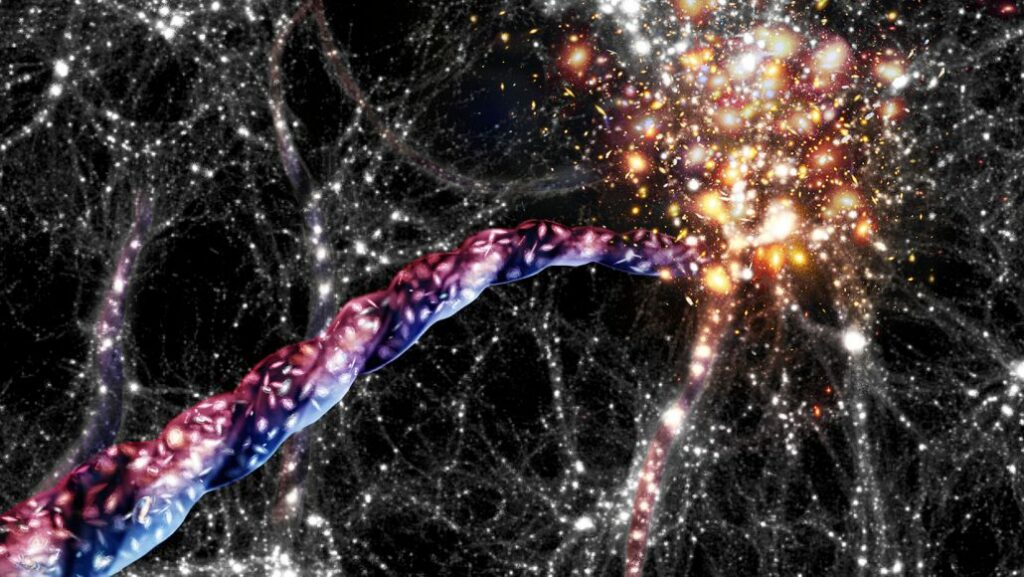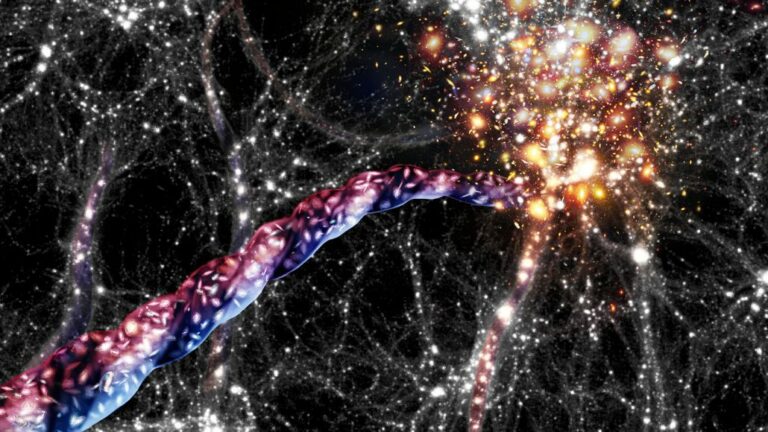Perhaps the largest spinning things in space are cosmic filaments.
Understanding filaments’ rotation could help astronomers figure out the origins of cosmic spin
Stars, moons, and even whole galaxies engage in it. Cosmic filaments do it too, according to two teams of scientists today. These tendrils, which span millions of light-years, whirl and swirl like enormous corkscrews.
The greatest structures in the universe are known as cosmic filaments, which also hold the majority of its mass (SN: 1/20/14). The cosmos is connected by these thin, dense strands of dark matter and galaxies that direct matter toward galaxy clusters at their ends (SN: 7/5/12).

A. KHALATYAN/J. FOHLMEISTER/AIP
When the Big Bang occurred, matter was not rotating; but, when stars and galaxies created, matter started to rotate. Galaxy clusters were the biggest rotating objects up until this point. “Traditional wisdom said that’s where spin stopped on the matter. According to Noam Libeskind, cosmologist at the Leibniz Institute for Astrophysics Potsdam in Germany, torques can’t really be produced on larger scales.
Therefore, it is puzzling to learn that filaments spin at a scale that makes galaxies appear to be tiny particles of dust. According to Mark Neyrinck, cosmologist at the University of the Basque Country in Bilbao, Spain, “We don’t have a complete understanding of how every galaxy gets to spin, or every filament starts to rotate.”
Neyrinck and colleagues measured the velocities of dark matter clumps as the clumps travelled around a filament in a 3-D cosmological simulation to test for rotation. In an article that was published in 2020 at arXiv.org and is now under review by the Monthly Notices of the Royal Astronomical Society, he and his colleagues detail their findings. In the meanwhile, Libeskind and colleagues looked for rotation in the actual cosmos. Their findings were published in Nature Astronomy on June 14. The scientists tracked galaxies’ movements and calculated their velocities perpendicular to filament axes using the Sloan Digital Sky Survey.
Despite using different methods, Neyrinck notes that the two researchers found filaments with comparable rotational velocities, which is “encouraging [indication] that we’re looking at the same entity.”
Next, scientists aim to investigate how and what causes these enormous space objects to revolve. “How does that work?” says Libeskind. Can we solve the problem?
Do not forget to share your opinion with us to provide you with the best posts !




0 Comments